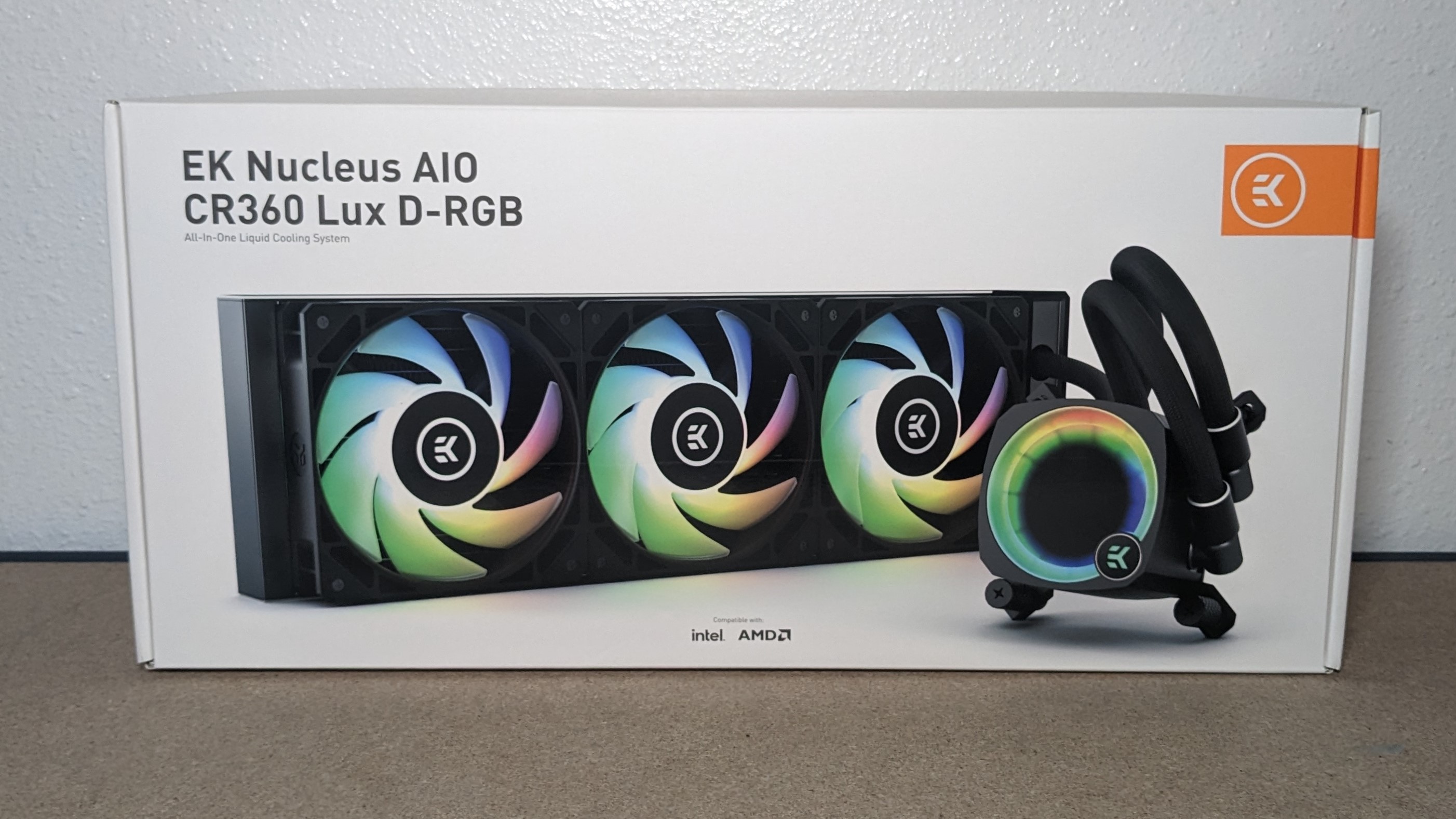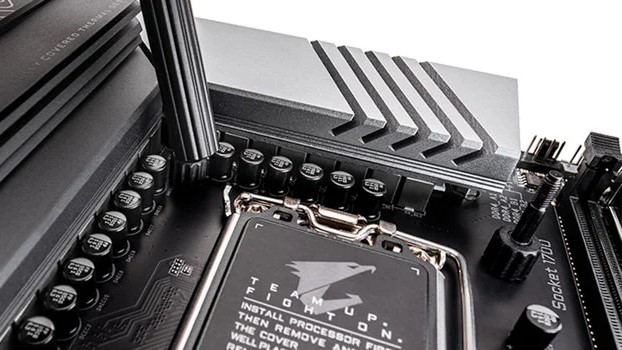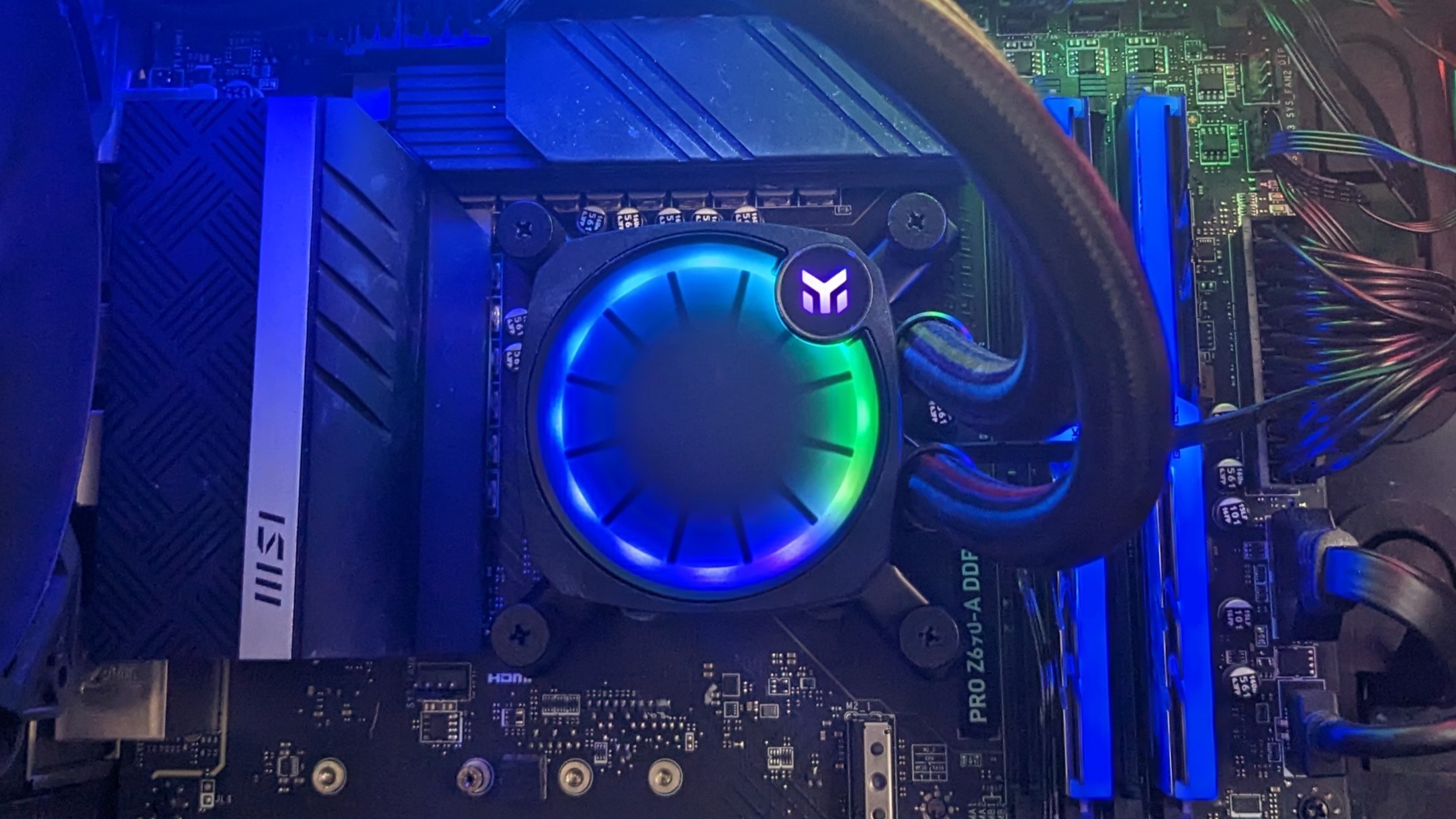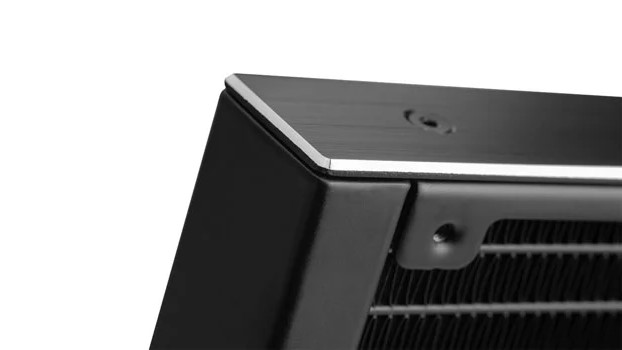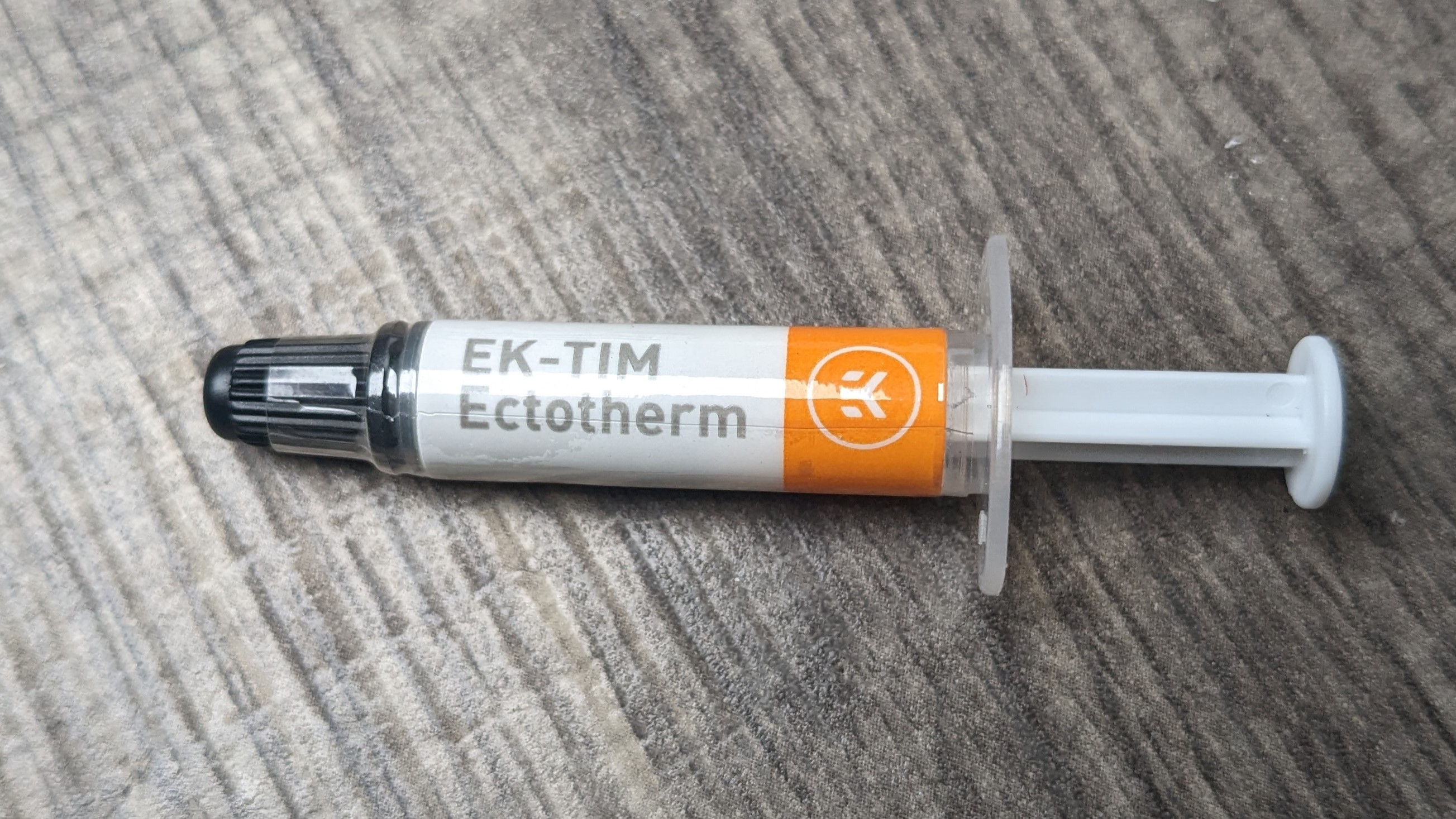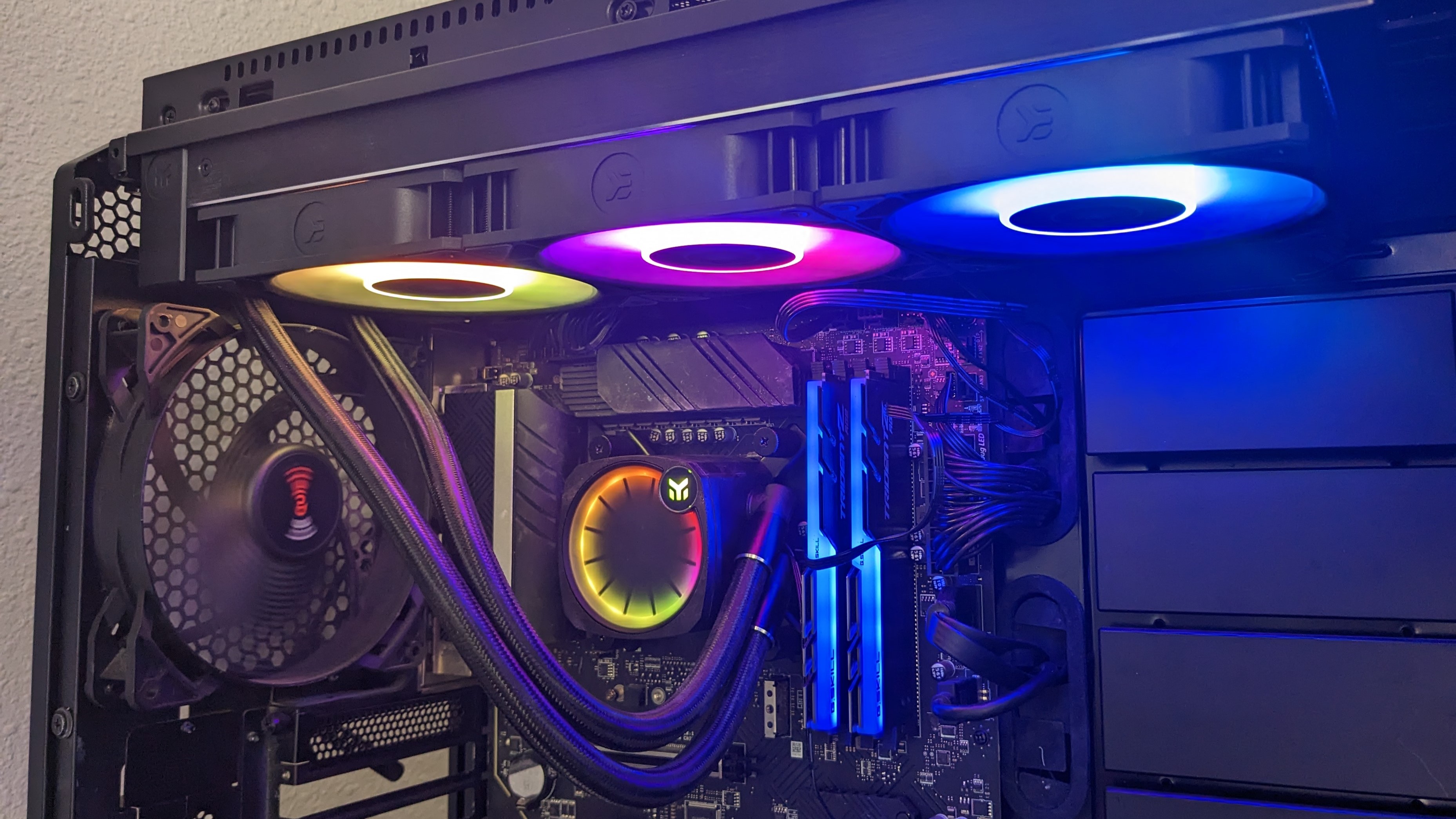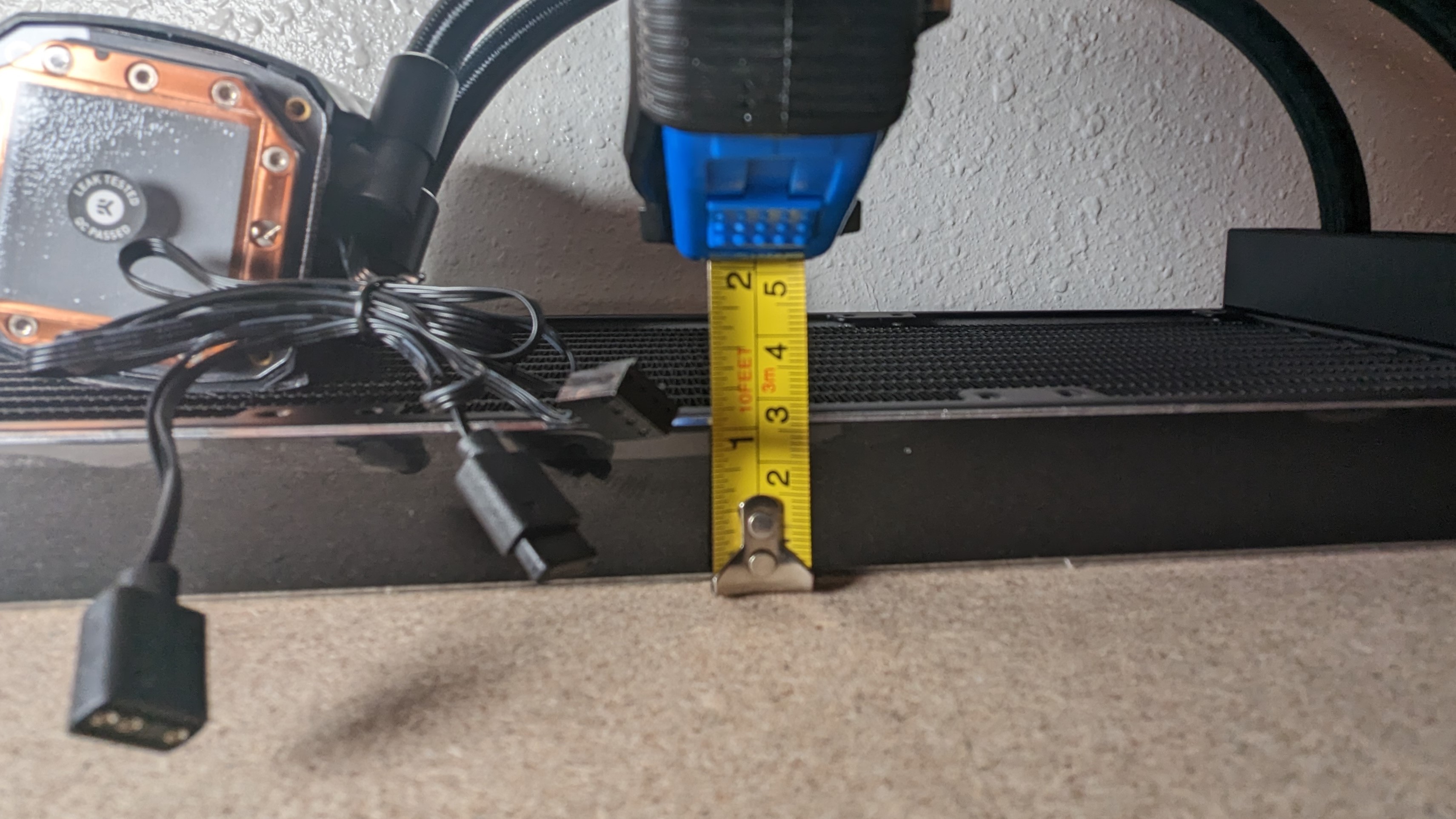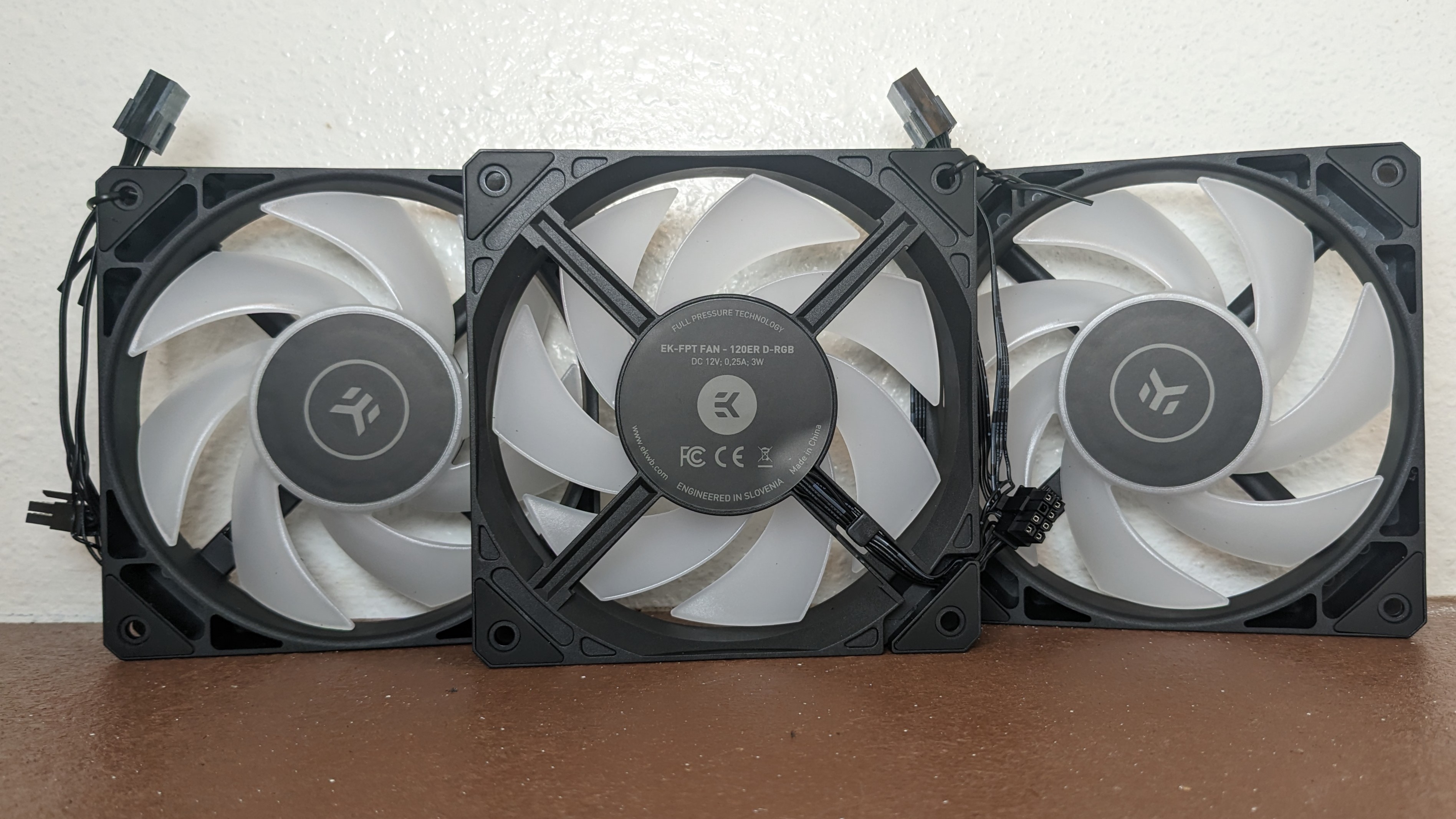Tom's Hardware Verdict
EKWB’s CR360 Lux is the new king of 360mm AIOs, providing better thermal performance than any of its competitors.
Pros
- +
Best cooling we’ve ever seen from a 360mm AIO
- +
Full RAM clearance
Cons
- -
Louder than the competition
- -
Expensive at $205 USD, but a value-oriented version without RGB exists for $159
Why you can trust Tom's Hardware
EKWB’s name is synonymous with PC cooling, although the company is more known for its custom cooling hardware than more mainstream products like AIO coolers. That might change though, if the company releases a few more products like the Nucleus AIO CR360 Lux D-RGB we’re testing here.
While it’s priced on the high end for a 360mm cooler, at $205, its performance is very impressive, and there is much attention here to aesthetic detail. And if you just want the cooling prowess without the RGB and chamfered edges, the company sells the Nucleus AIO CR360 Dark, which ditches the aesthetic niceties for a lower price of $159. While we haven’t tested it, it should perform roughly the same as the pricier, prettier CR360 Lux.
Cooler Specifications
| Cooler | EK Nucleus AIO CR360 Lux D-RGB |
| MSRP | $204.99 |
| Installed Size (with fans) | 400 (L) x 124 (W) x 52 mm (H) |
| Radiator Material | Aluminum |
| Socket Compatibility | Intel® LGA 115x / 1200, 2011, 2011-3, 2066, 1700 AMD® AM5 / AM4 |
| Base | Copper Base |
| Warranty | 5 years |
| Max TDP (Our Testing) | ~250W on Intel’s i7-13700K |
Packing and Included Contents
The EK Nucleus AIO CR360 Lux D-RGB arrives in a box similar in size to other coolers in its class.
EK put a lot of care into this product’s packaging. The inner contents are protected by thick molded foam, cardboard, and plastic peel to ensure the cooler arrives undamaged. Opening the unit first reveals a welcome envelope that contains stickers, registration information, and a thank you note from EK.
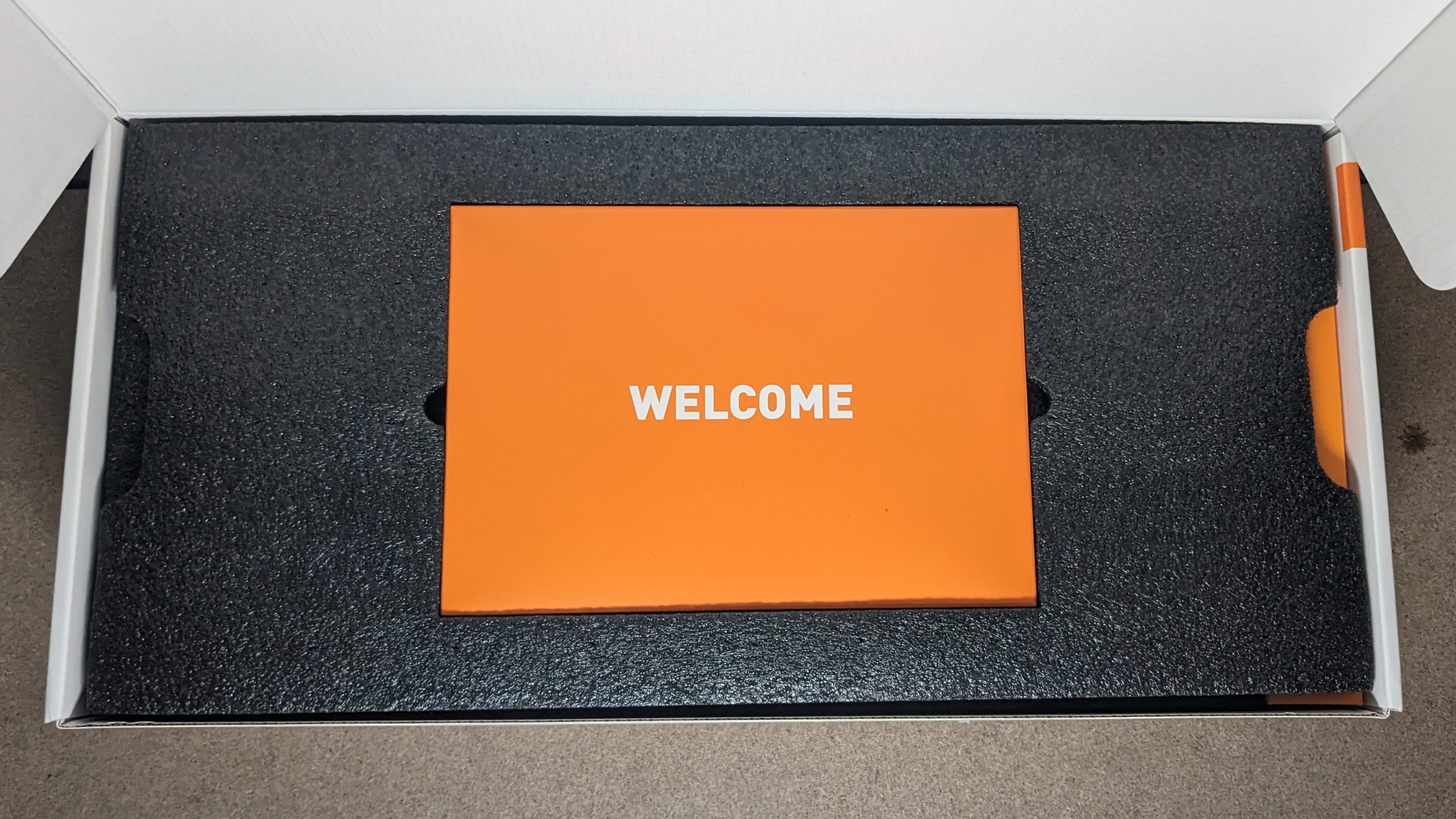
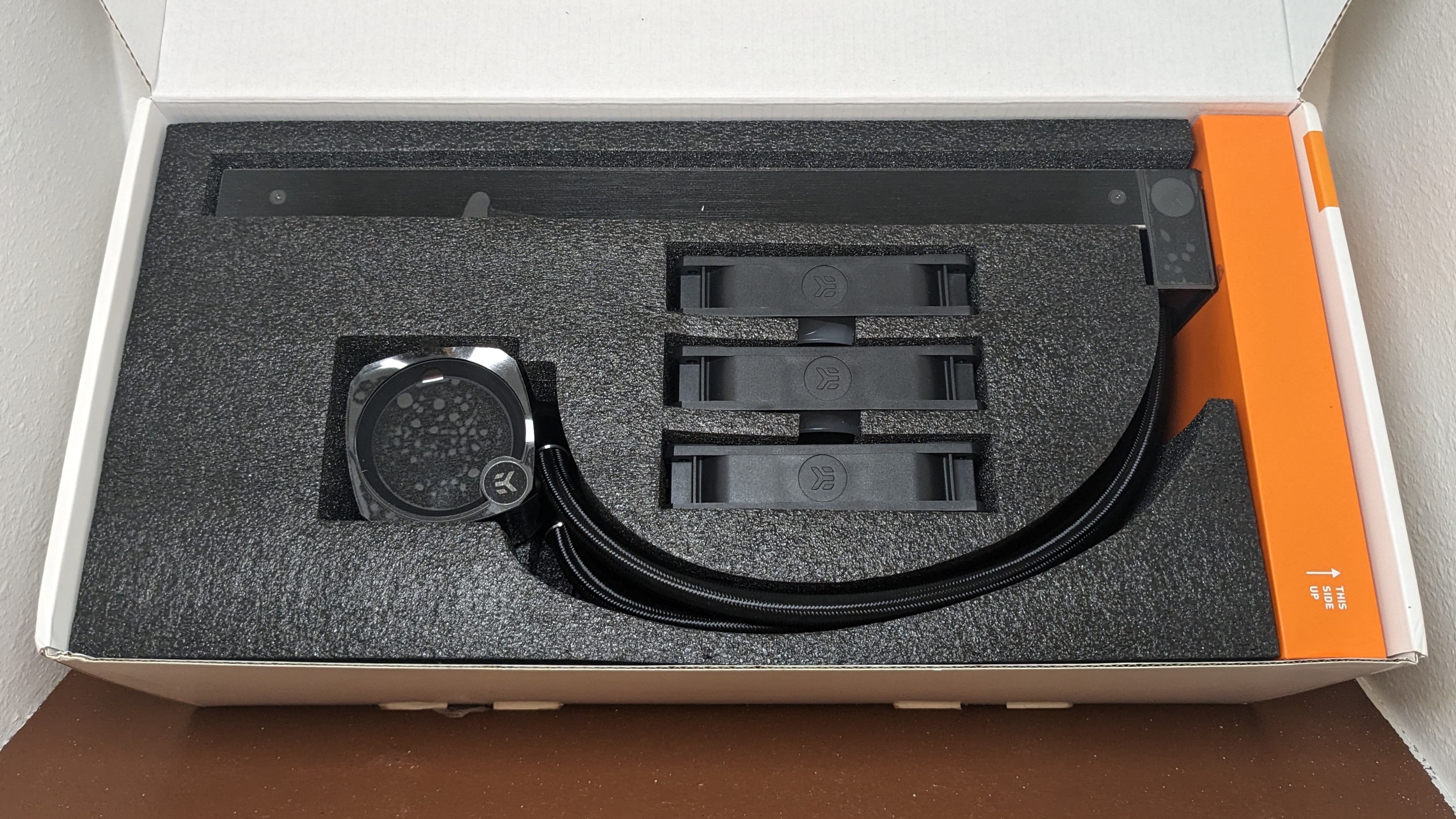
The accessories included are packaged in their own box, which slides open to reveal the included contents.
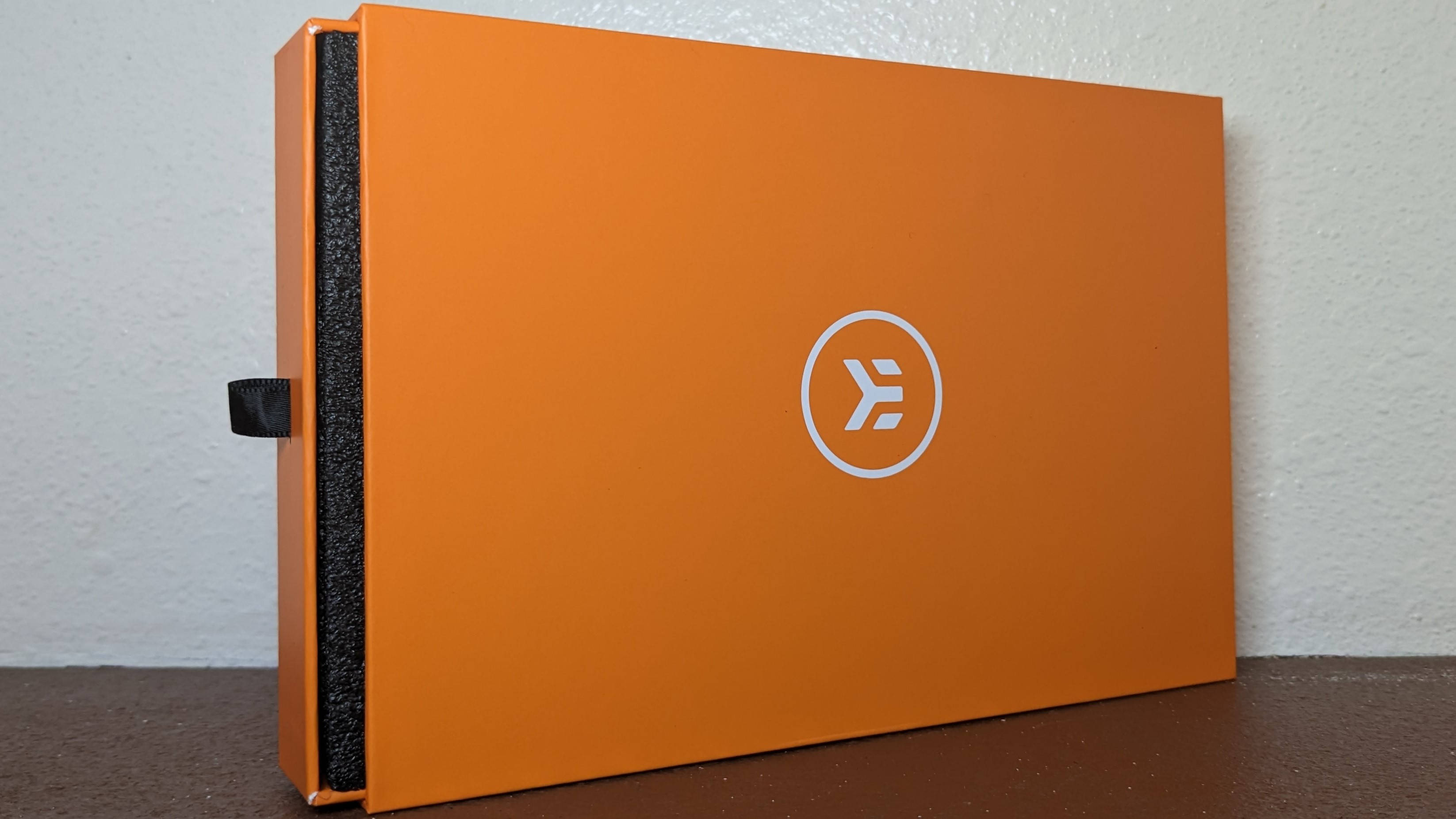
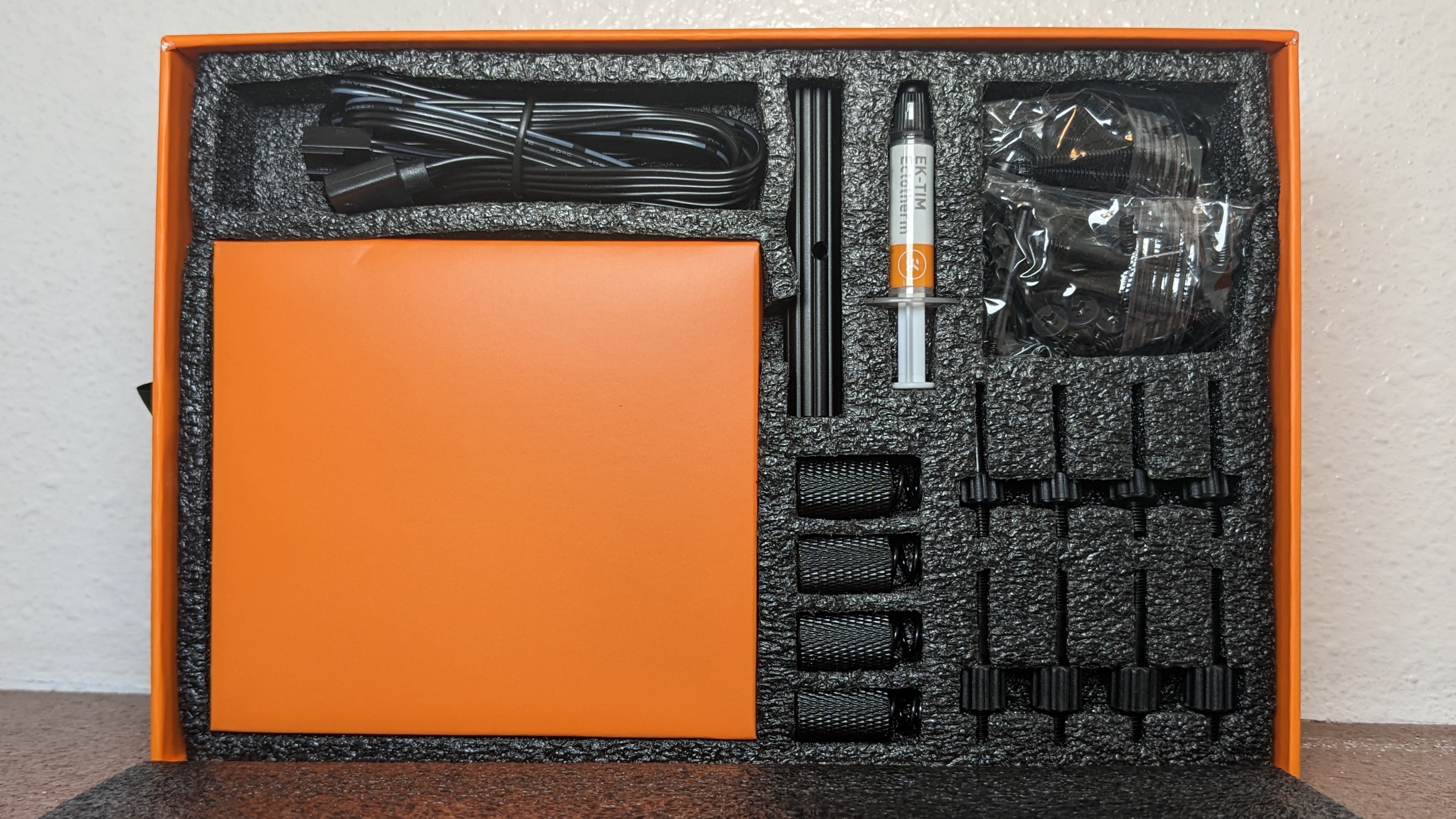
Included with the package are the following:
- 360mm Radiator & CPU block
- Three 120mm EK-Loop FPT Fans
- Pre-installed Thermal Paste
- Additional tube of thermal paste
- Mounting for Intel and AMD Platforms
- Tool for installing motherboard stand-offs
Installation on LGA1700
Insalling EKWB’s cooler on our LGA 1700 testbed was fairly simple, but it’s also very easy to screw up.
1. Connect the mounting bars to the CPU block using the included screws
2. Apply the backplate to the back of the motherboard.
Get Tom's Hardware's best news and in-depth reviews, straight to your inbox.
3. Secure the mounting standoffs through the motherboard to the backplate using the built in tool. It’s very easy to make an error during this part. I advise first slowly rotating the screw backwards until you hear a “click”, and then secure it normally. This is very important, because if there is any error in securing these bolts, it will reflect in the cooler’s thermal performance.
4. Mount the CPU block on top of the standoffs and secure it using the included screws.
5. Attach the fans to the radiator, and then secure the radiator to your computer’s case.
6. Lastly, connect the fans to the PWM & ARGB splitters, and then connect the splitter wires to the motherboard.
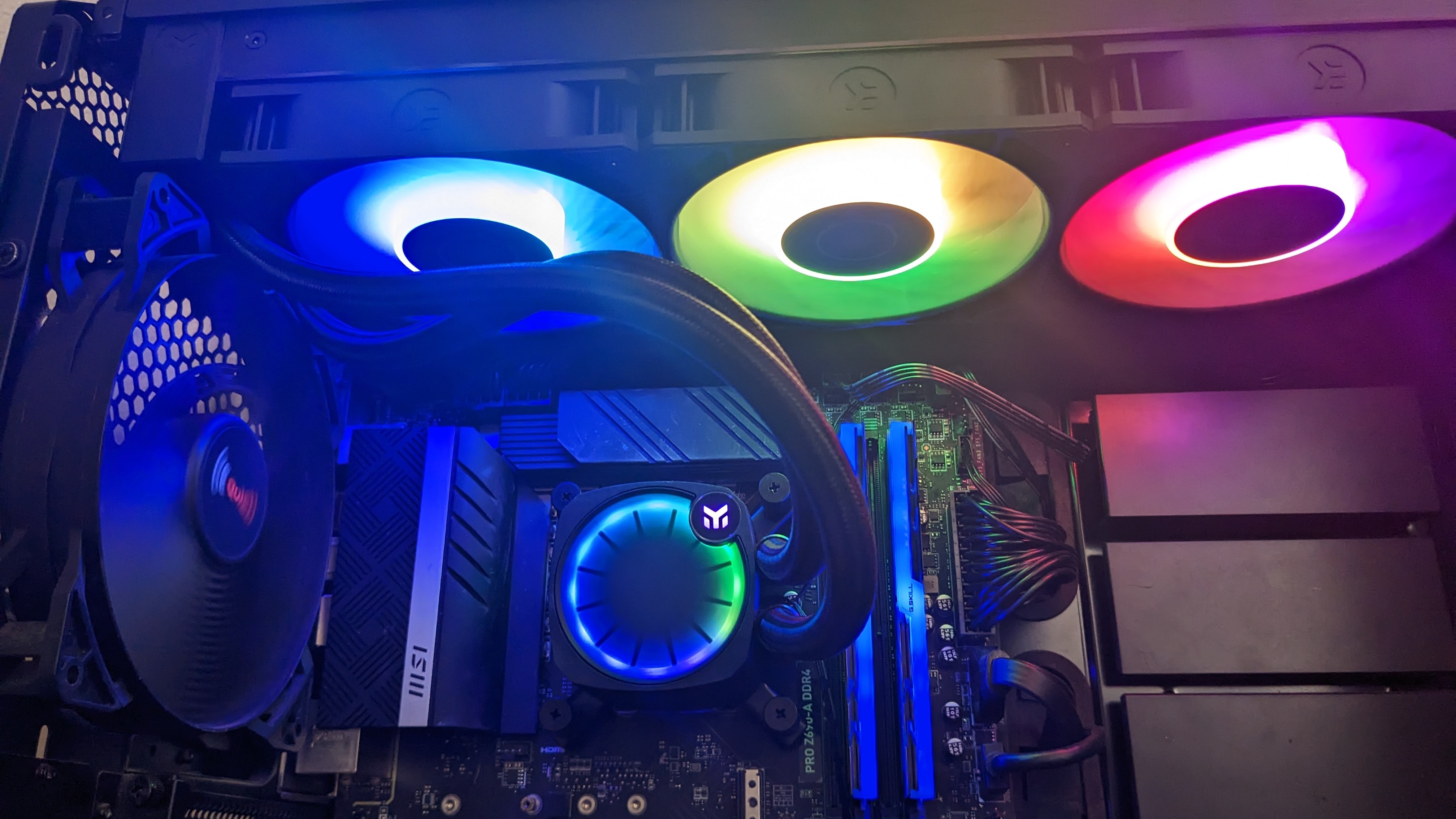
Features of EK Nucleus AIO CR360 Lux D-RGB
The CR360 Lux features an aluminum side plate with the edges machined off for a shiny allow finish. This obviously doesn’t do anything for performance, but it’s a nice touch that will make the inside of your system look a bit more premium.
⋇ Diamond-cut brushed aluminum side panel
The CR360 Lux features an aluminum side plate with the edges machined off for a shiny allow finish. This obviously doesn’t do anything for performance, but it’s a nice touch that will make the inside of your system look a bit more premium.
⋇ Rotatable Pump Top
The decorative top of the CPU block can be rotated, which allows one to install the cooler in any orientation while maintaining the proper direction of the logo.
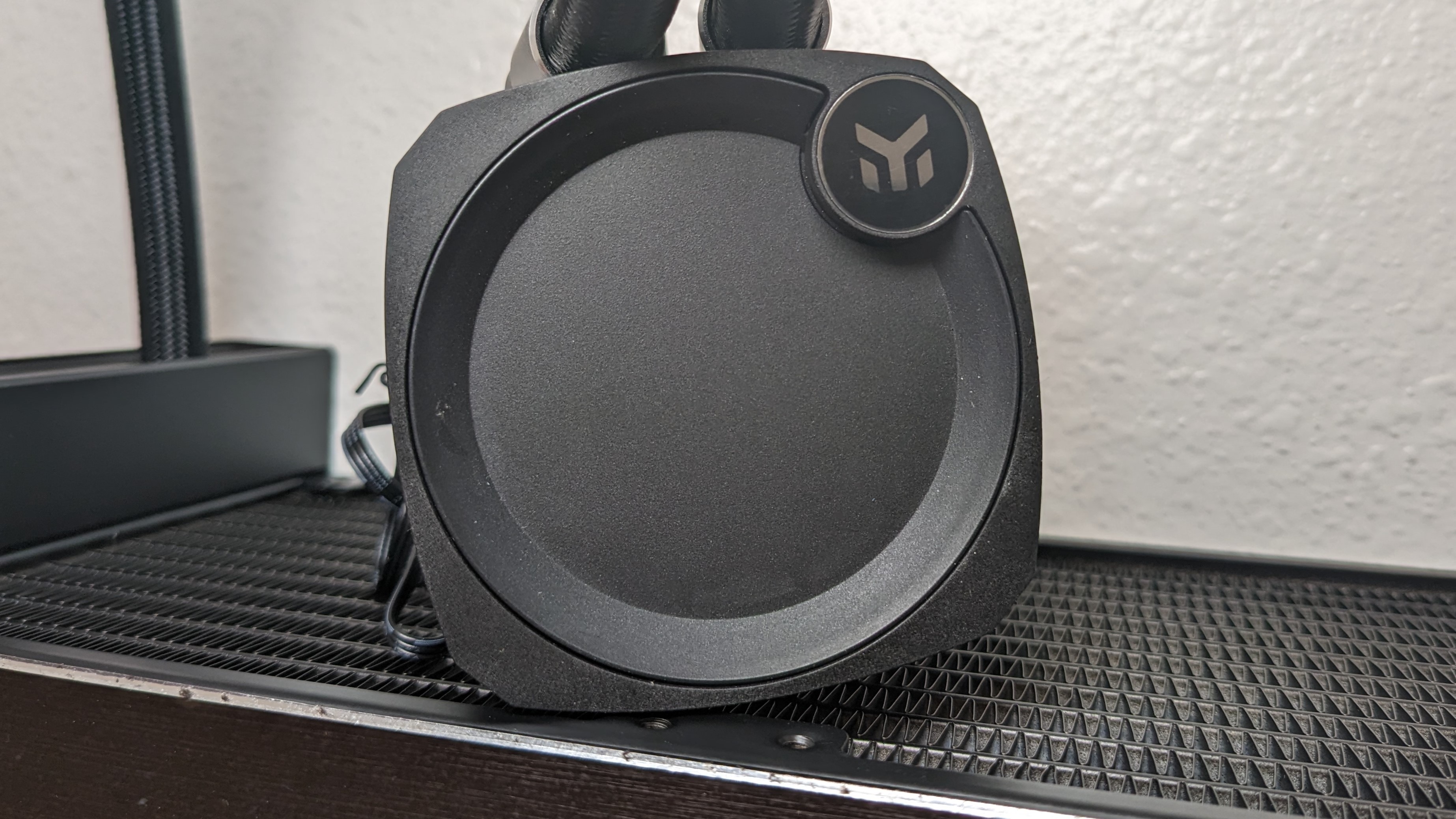
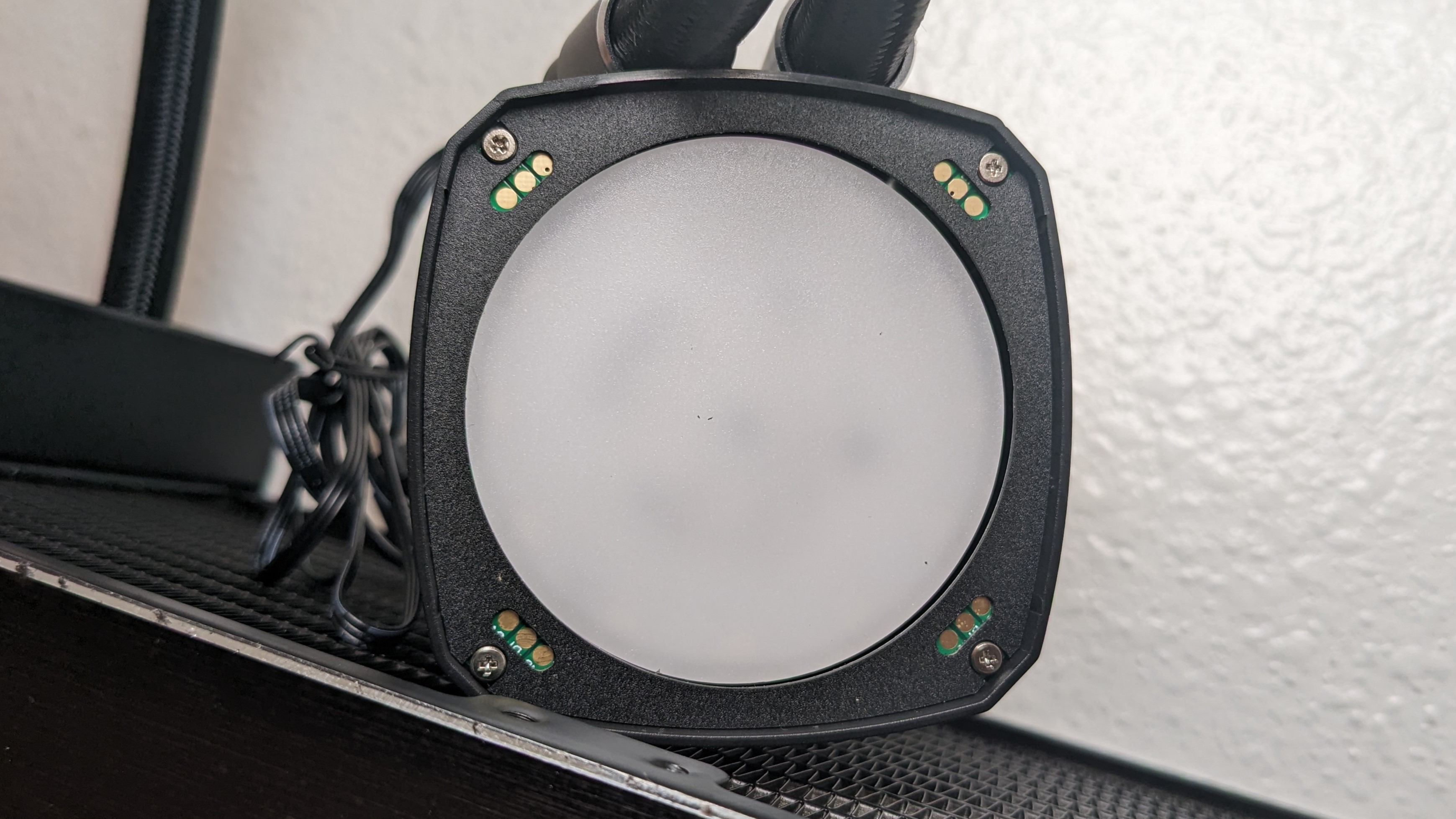
⋇ Dense Microfin Copper Coldplate with pre-applied thermal paste
EK’s Coldplate incorporates extremely dense microfins, which increase the efficiency of heat transfer from the copper base to the unit’s liquid coolant for maximum cooling performance.


⋇ Additional tube of thermal paste
Most manufacturers either include thermal paste pre-applied, or include a small amount which can be applied by the consumer. EK does both, including a small tube of its EK-TIM Ectotherm thermal paste, in addition to the pre-applied thermal paste.
⋇ Complete RAM compatibility
As the compact CPU block of the AIO does not overhang or interfere with RAM in any way, all sizes of DDR4 & DDR5 DIMMs are supported.
⋇ Fine Sleeved Tubing
The rubber tubes of the unit are reinforced and protected with fine sleeving, which also adds to aesthetic appeal of the unit.
⋇ 27mm Thick Radiator
⋇ EK-Loop FPT Fans
There’s more to a cooler than just the heatsink or radiator. The bundled fans have a significant impact on cooling and noise levels and the unit’s aesthetic. EKWB says these fans were designed specifically for liquid cooling and feature a full frame design which stops airflow from escaping the frame, thus improving total static pressure. They feature EK’s OmniLink daisy chain connectors. These covert PWM and ARGB connections into a single header connected by micro-fit 8-pin connectors similar to CPU power connections. This results in a more secure connection with less cable management to worry about.
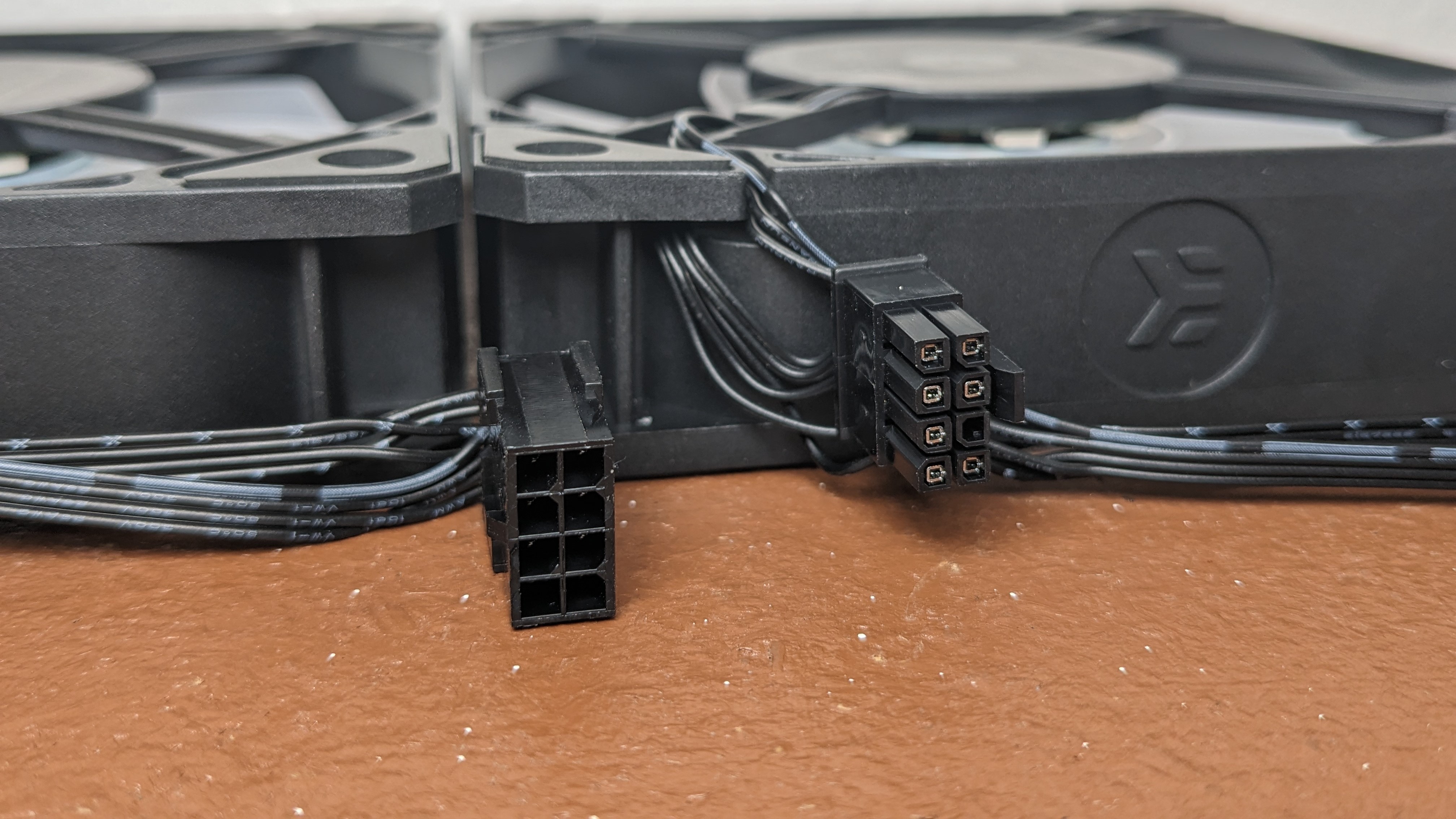
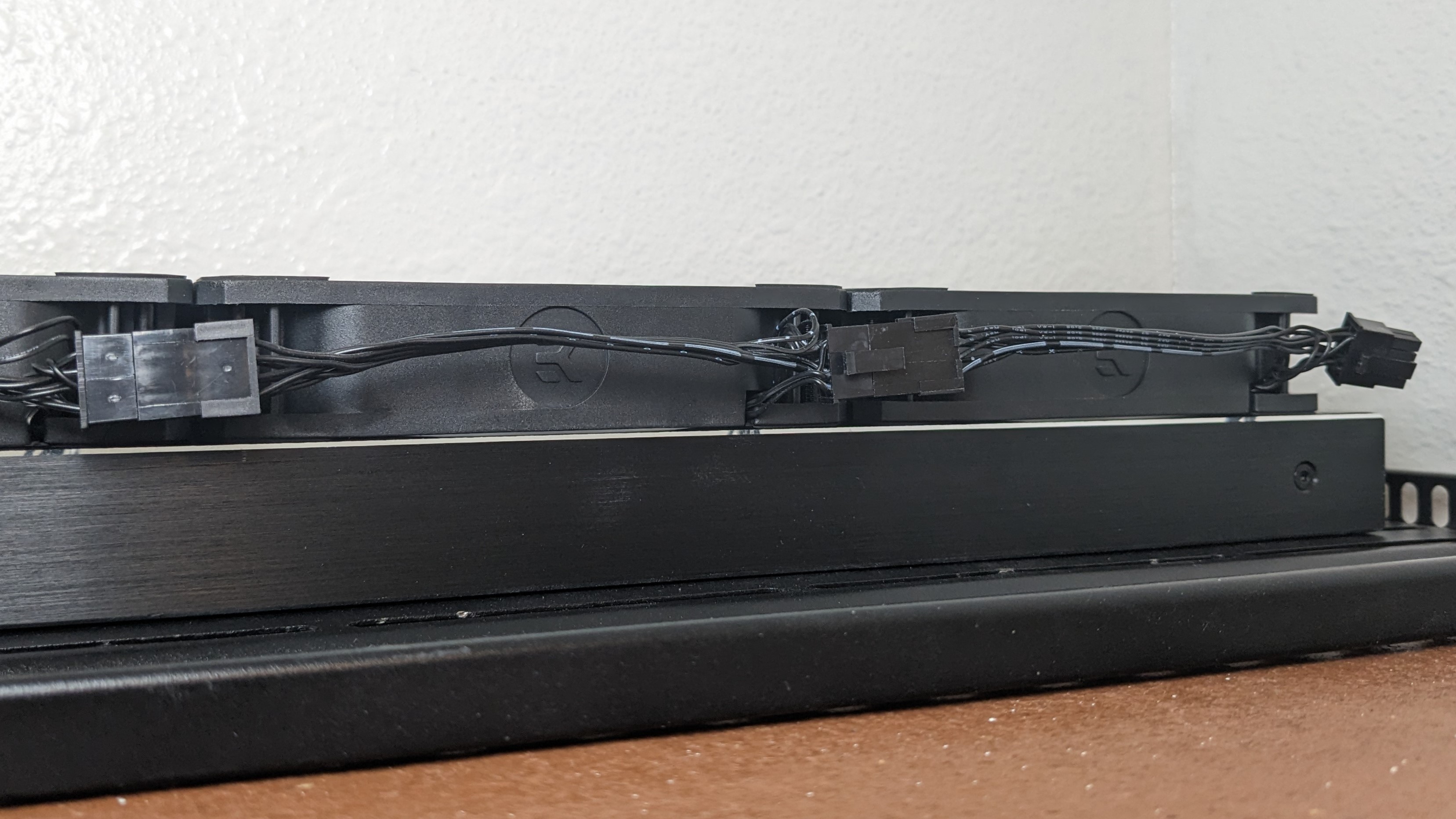
| Model | EK-Loop FPT 120 D-RGB |
| Dimensions | 120 x 120 x 25 mm |
| Fan Speed | 550 - 2300 RPM |
| Air Flow | 77 CFM (Max) |
| Air Pressure | 2.7 mmH20 (Max) |
| Bearing Type | Fluid Dynamic Bearing |
| MTTF | >60,000 hours |
| Lighting | ARGB |
Testing Considerations
Modern high-end CPUs, whether Intel or AMD, are difficult to cool in intensive workloads. In the past, reaching 95C+ on a desktop CPU might have been a cause for concern. But with today’s processors, it is considered normal operation. Similar behavior has been present in laptops for years due to cooling limitations in tight spaces.
Despite assurances from the CPU manufacturers that there is no concern in running the CPU at or near its maximum temperature, many enthusiasts still prefer to have their CPUs run at lower temperatures. Most coolers won’t be capable of achieving this in the strongest and most power-hungry of workloads, but the strongest of 360mm AIOs are able to handle the heat with Intel’s i7-13700K.
Our expectations are high for EK’s CR360 Lux, we expect nothing but the best performance from a premium brand such as EKWB. We’ll be comparing it to the strongest 360mm AIOs we have tested: DeepCool’s LT720, MSI’s MAG S360, and Cooler Master’s newly released 360L Core.
LGA1700 Socket Bending
There are many factors other than the CPU cooler that can influence your cooling performance, including the case you use and the fans installed in it. A system's motherboard can also influence this, especially if it suffers from bending, which results in poor cooler contact with the CPU.
In order to prevent bending from impacting our cooling results, we’ve installed Thermalright’s LGA 1700 contact frame into our testing rig. If your motherboard is affected by bending, your thermal results will be worse than those shown below. Not all motherboards are affected equally by this issue. I tested Raptor Lake CPUs in two motherboards. And while one of them showed significant thermal improvements after installing Thermalright’s LGA1700 contact frame, the other motherboard showed no difference in temperatures whatsoever! Check out our review of the contact frame for more information.
Testing Methodology
All testing is performed at a 23C ambient room temperature. Multiple thermal tests are run on each CPU to test the cooler in a variety of conditions, and acoustic measurements are taken with each result. These tests include:
1. Noise normalized testing at low noise levels
2. “Out-of-the-box”/default configuration thermal & acoustics testing.
a.) This means no power limits on Intel’s i7-13700K, and AMD’s default power limits on AMD’s Ryzen 7 7700X.
b.) Because CPUs hit Tjmax in this scenario, the best way to compare cooling strength is by recording the total CPU package power consumption.
3. Thermal & acoustics testing in power-limited scenarios.
a.) With Ryzen 7 7700X, I’ve tested with limits of 95W and 75W enforced.
b.) On Intel’s i7-13700K, I’ve tested with limits of 175W and 125W enforced.
The thermal results included are for 10-minute testing runs. To be sure that was sufficiently long to tax the cooler, we tested both Thermalright’s Assassin X 120 R SE and DeepCool’s LT720 with a 30-minute Cinebench test with Intel’s i9-13900K for both 10 minutes and 30 minutes. The results didn’t change much at all with the longer test: The average clock speeds maintained dropped by 29 MHz on DeepCool’s LT720 and 31 MHz on Thermalright’s Assassin X 120 R SE. That’s an incredibly small 0.6% difference in clock speeds maintained, a margin of error difference that tells us that the 10-minute tests are indeed long enough to properly test the coolers.
Testing Configuration – Intel LGA1700 Platform
| CPU | Intel Core i7-13700K |
| Liquid Coolers Tested | Cooler Master MasterLiquid 360L Core DeepCool LT720 EKWB Nucleus AIO CR360 Lux D-RGB MSI MEG CoreLiquid S360 |
| Motherboard | MSI Z690 A Pro DDR4 |
| GPU | Intel ARC A770 LE |
| Case | Be Quiet! Silent Base 802, system fans set to speed 1 setting. |
| Monitor | LG 45GR95QE |
| PSU | Cooler Master XG Plus 850 Platinum PSU |

Albert Thomas is a contributor for Tom’s Hardware, primarily covering CPU cooling reviews.
-
saunupe1911 Nah the ARCTIC Liquid Freezer – II 360 is still the one to beat as it's so dang quiet while only being 2 C warmerReply -
Albert.Thomas Reply
I have previously reviewed that cooler:saunupe1911 said:Nah the ARCTIC Liquid Freezer – II 360 is still the one to beat as it's so dang quiet while only being 2 C warmer
https://www.tomshardware.com/reviews/arctic-liquid-freezer-ii-360-argb-review/
Unfortunately, ARCTIC's Liquid Freezer II is unable to keep CPUs like Intel's i7-13700K under TJMax in the most intensive workloads - which is why it isn't included in this review. -
Maikurosofuto Why not use the 13900K instead? To see how much this AIO can cool, it's total limit.Reply -
Albert.Thomas Reply
Good question.Maikurosofuto said:Why not use the 13900K instead? To see how much this AIO can cool, it's total limit.
The motherboard I was using for my i9-13900K system died, and because I was using a Thermalright LGA1700 frame it wouldn't be eligible for warranty. I'll probably start using an i9 again for cooler testing when the i9-14900K is released.
